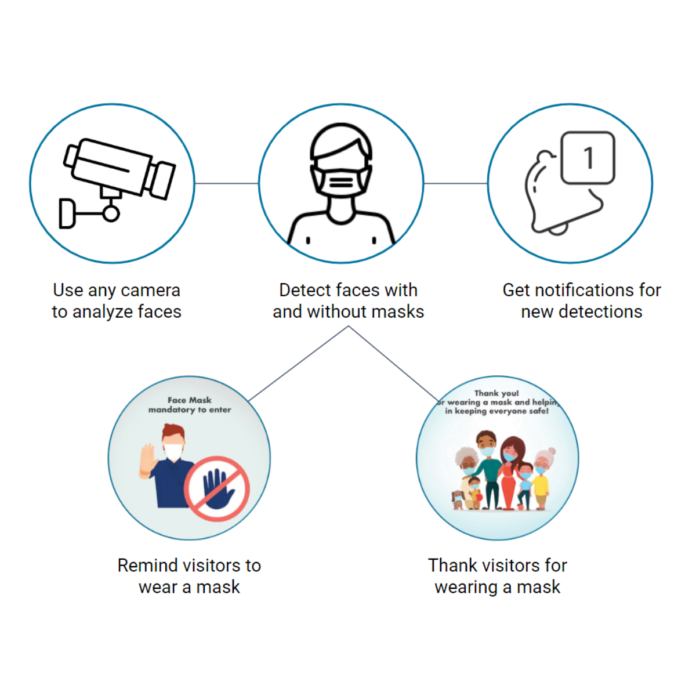Face Mask Detection is a technology capable of matching a human face from a digital image or a video frame against a database of faces, typically employ to authenticate users through ID verification services, works by pinpointing and measuring facial features from a given image.
While initially a form of computer application, facial recognition systems have seen wider uses in recent times on smartphones and in other forms of technology, such as robotics. Because computerized facial recognition involves the measurement of a human’s physiological characteristics facial recognition systems are categories as biometrics.
Although the accuracy of facial recognition systems as a biometric technology is lower than iris recognition and fingerprint recognition, it is widely adopt due to its contactless process. Facial recognition systems have deployed in advanced human-computer interaction, video surveillance and automatic indexing of images. They are also use in wide range by law enforcement agencies.
Disadvantages :
lack of control over their personal information.” Critics of mask recognition also think that this new technology could be prone to some of the same pitfalls as facial recognition. Many of the training datasets uses for facial recognition are dominating by light-skinned individuals.
Advantages :
- Intelligent Alerts.
- Facial Recognition.
- Camera Agnostic.
- Easy Implementation.
- Staff Friendly.
- No New Hardware Needed.
What is the need of face mask detection?
The Face Mask Detection System can be used at office premises to detect if employees are maintaining safety standards at work. It monitors employees without masks and sends them a reminder to wear a mask.
Algorithm for face mask detection?
The dataset is split into training, testing and validation set with 64:20:16 respectively. The algorithms are implement by the use of Python 3.7 and face detection is achieved through MobileNet-SSD/ResNet. . dib is used for detecting masks with learning rate = 0.003, momentum = 0.9 and batch size = 64.
Certificate for face mask?
The requirement of PPE kit certification and face masks need to go through the certification of CE, GMP, FDA and approval of IMA. These medical products should follow the guidelines as it is prescribed under the certification and approval processes.
What are the specifications for a face mask?
- PRODUCT: PLEATED FACE MASK.
- MATERIAL: MEDICAL POLYPROPYLENE 126 ‘SMS, NONWOVEN.
- THICKNESS: BACKGROUND 80, MID 18 AND TOP 17 GSM.
- MASK SECURING METHOD: EAR LOOPS, LYCRA.
- DIMENSIONS: WIDTH 90 MM, LENGTH 175 MM.
- SEAL: THERMAL SEALED.
- BACTERIAL FILTRATION EFFICIENCY: 98.60%
- NONWOVEN SMS.
What is Retina face mask?
The proposed Retina Mask is a one-stage detector, which consists of a feature pyramid network to fuse high-level semantic information with multiple feature maps, and a novel context attention module to focus on detecting face masks.
What is ROI in face detection?
The paper presents an automatic Region of Interest (ROI) detection technique of six universal expressive face images. The proposed technique is a facial geometric based hybrid approach. The average localization accuracy of all detected facial regions is 94%.
How face is detected?
Face detection algorithms typically start by searching for human eyes — one of the easiest features to detect. The algorithm might then attempt to detect eyebrows, the mouth, nose, nostrils and the iris. The methods use in face detection can be knowledge-base, feature-base, template matching or appearance-based.




